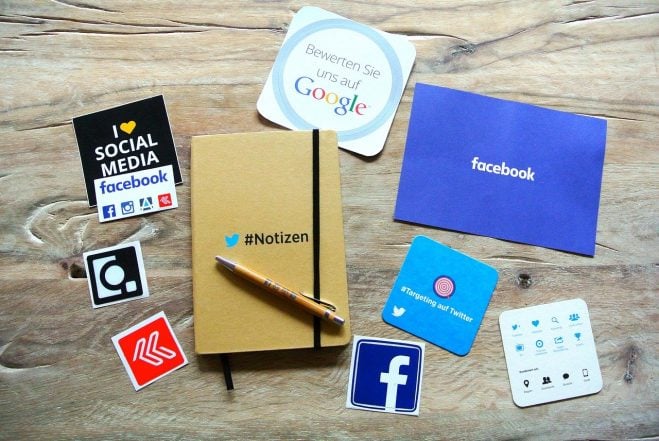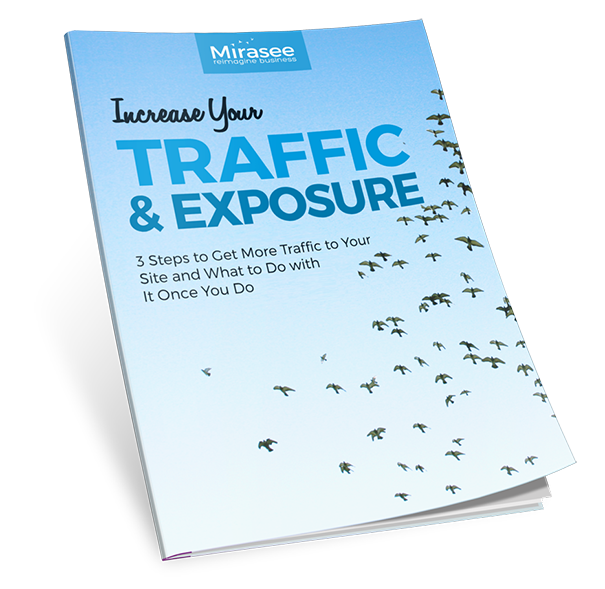Twitter vs. Facebook: Which Is Best for Your Business?
Tara Malone
Updated for 2023
Ah, social media marketing. You’ve heard all the hype about how important it is, and you’re downright sick of it.
Yes, you know you need to promote your business on social media to grow your audience.
But you also know there are tons of platforms out there. And you haven’t the slightest idea which one to try first.
You don’t want to make the wrong choice, after all.
At this point, what you really need is a focused approach to social media. It’s much better to focus your efforts on one or two social media channels to find out which one works best for your business.
But how do you know if Facebook or Twitter is better for your business?
The truth is, the answer isn’t that simple. In this post, we’re going to do a deep dive into both of these social media platforms to help you uncover which one is best for your business.
Are you ready? Then let’s get started!
Facebook vs. Twitter: What Makes Them So Great Anyway?
Let’s start by answering these questions: What makes Facebook and Twitter so great in the first place?
And why should you launch your social media marketing efforts with one of these platforms?
One of the best ways to approach these questions is by considering the statistics:
- Facebook is the most widely used social media platform in the world, with nearly 3 billion active monthly users.
- This means that 37 percent of the world’s population is on Facebook.
- Almost 70 percent of adults in the U.S. are on Facebook.
- 23 percent of U.S. adults are Twitter users.
On the surface, it might appear that Facebook is the better platform for entrepreneurs and marketers. After all, there are way more Facebook than Twitter users.
But don’t write Twitter off so quickly. Resist the urge to make a decision based on the total number of users alone.
There are many factors to consider, such as which platform your target audience actually uses.
With that in mind, let’s take a closer look at who hangs out on Facebook and Twitter.
Twitter Users vs. Facebook Users
Before choosing your platform, it’s essential to do plenty of research to discover where your target customer spends their time.
This consideration is extremely important when deciding which platform to use. After designing your customer avatar, you should have a good idea of the kinds of people you’re trying to attract. It makes sense to choose the platform where these folks hang out the most.
So who uses these platforms? Let’s take a look.
Facebook Demographic Basics
As I mentioned above, almost 70 percent of American adults use Facebook.
The most recent data shows that 23.6 percent of Facebook users are between the ages of 25 and 34, 18.4 percent are between the ages of 35 and 44, and 18.1 percent are between the ages of 18 and 24.
One important trend to note is that Facebook has been declining in popularity with younger generations, and the smallest group of Facebook users are between the ages of 13 and 17. Only 3.4 percent of Facebook users fall into this age group.
So if your target audience falls into the Generation Z category, Facebook is probably not the best social media platform to reach them.
Facebook typically works best if you’re a B2C business with a target audience between the ages of 25 and 55+. It’s also well suited to these industries: Fashion, Auto, E-commerce, Retail, Entertainment, Real Estate, Marketing, Sports, or Health and Wellness.
Twitter Demographic Basics
Even though it doesn’t have as many users as Facebook, that doesn’t automatically mean you should ignore Twitter.
According to recent data, the largest percentage of Twitter users are between the ages of 25 and 34. This age group makes up 38.5 percent of Twitter users. Like with Facebook, the smallest percentage of Twitter users are between the ages of 13 and 7, which make up 6.6 percent of users.
In terms of business usage, Twitter is a social media platform that tends to work best for B2C businesses. This is especially true if you’re in one of these industries: News and Information, Retail, E-commerce, Health and Wellness, Travel and Hospitality, Telecom, Finance, Fashion, Retail, or Sports.
In contrast to Facebook, Twitter tends to be better suited to businesses whose target audience falls between the ages of 18 and 34.
Facebook vs. Twitter: User Engagement

Another thing to consider is how engaged Facebook and Twitter users really are when it comes to your industry.
You’ll need to find out how often your target audience checks in with each of these platforms and what kind of content they typically engage with. It’s also essential to look at how much time users of each platform actually spend there each day.
With this in mind, let’s take a closer look at how engagement works across both channels.
Twitter: A Look at User Engagement
Twitter users are in general quite an engaged bunch. More than half of them (52 percent) visit the platform every day, and 84 percent of users surveyed use Twitter weekly,
Since a lot of journalists, politicians, and other high-profile people are on Twitter, many users turn to Twitter to find out what’s trending in the news. Surveys show that about 69 percent of Twitter users get their news from this social media channel.
At the same time, it’s important to remember that trending news and other content posted on Twitter moves at an extremely fast pace.
That’s why if you’re considering using Twitter, it’s important to think about the kind of content you create and if it would be compatible with such a fast-paced social network.
For instance, if you intend to share quick business tips, infographics, or trending news with your audience, it may be well worth your while to join Twitter.
Still, the downside is that since new content is being generated constantly on Twitter, it’s easy for your scheduled Tweets to get lost. This means there’s a chance that few people will actually see your content.
Facebook: A Look at User Engagement
For the majority of businesses, Facebook is the better option if you’re looking to engage your followers over the long term.
The content doesn’t move nearly as quickly as it does on Twitter. This means you have a better chance of being seen if you’re a new brand.
And as your brand grows, Facebook will bring more user engagement on average than Twitter. For example, if you were to end up with one million Facebook followers, you would receive about 700 likes, comments, and shares for each piece of content you post. But if you have one million Twitter followers, you would probably only get around 300 interactions for every piece of content you tweet.
Still, keep in mind that the size of the audience isn’t what’s most important; their engagement level is. So if you have one thousand followers that are super engaged and loyal to your business, that can often be more valuable than having ten thousand lukewarm followers.
Facebook Marketing vs. Twitter Marketing

When it comes to marketing, Facebook and Twitter play very different roles.
As I mentioned above, Twitter is extremely fast-paced and mainly lets their users uncover new content and trending news in their area of interest.
In contrast, Facebook is focused on making connections with family, friends, and people with shared interests and on engaging in a deeper and more personal way with brands.
Let’s examine in more detail the role that Facebook and Twitter play in marketing your business.
Facebook Marketing 101: Content and Organic Reach
Facebook is all about connecting with your audience, and gives you opportunities to engage your followers with each piece of content you post.
You don’t need to post quite as frequently as you do on Twitter, and there are also many options for promoting your posts after you’ve published them to display them to a larger audience.
Your followers also have the option of asking questions or commenting on your posts, which gives you the valuable opportunity to communicate and interact with your followers. If you play your cards right, this can help give them a very positive impression of your brand.
In addition, Facebook lets you create a page for your business where you can share more information about your brand, post updates, videos, and many other types of content.
Video content in particular has become hugely popular on Facebook in recent years. In fact, video posts are the ones that have the most engagement on Facebook by far.
Research shows that video posts get 59 percent more engagement than other types of posts, and Facebook users watch close to 100 million hours of video content every single day.
If your target audience enjoys video content, Facebook gives you plenty of opportunities to include video in your marketing strategy and you should absolutely invest your time in creating video content for your audience.
In addition to videos, curated content also performs extremely well on Facebook. By curated content, we mean things like articles, videos, and resources that were created by other people but are relevant and of interest to your followers. So it’s definitely worth your while to share valuable resources with your followers on Facebook as well.
Despite all the pros of Facebook marketing, there is also a major downside to keep in mind – it’s much more difficult for your business pages to earn organic exposure on Facebook.
It’s also a lot harder to get likes on your Facebook page than to get Twitter followers, which means that you need to work much harder to engage your audience and invest more time and money on developing a marketing campaign.
Twitter Marketing 101: Content and Organic Reach
Marketing on Twitter requires a very different approach. Twitter is a very fast-paced social media platform, and is best suited to bite-sized pieces of content.
This can be very appealing to many modern customers, who prefer to skim online content instead of reading long posts.
Since it’s home to lots of trending news, Twitter is also a good place to share current information related to your company, products, or services with your audience.
Infographics also perform extremely well on Twitter, and are 3 times more likely to be liked and shared than any other type of content. They’re also an incredible 30 times more likely to be read than text-based posts.
As with Facebook, curated content and videos are extremely popular on Twitter. When sharing curated content, make sure it’s image-based rather than text based and include link previews, GIFs, images, and videos.
In addition to posts and infographics, Twitter also gives its users the option to create live videos and stream them to clients. This provides more opportunities for brands that are active on Twitter to interact with their customers, clients, and fans.
If you decide that Twitter is the platform best suited to your brand, don’t overlook the power of live streaming to reach and engage more prospects.
Video in general is a huge deal on Twitter, and user watch 2 billion videos on Twitter every day. Additionally, people who view a branded video on Twitter are 28 percent more likely to buy from that brand than other web users.
There are lots of positives to Twitter, but there are also some negatives. The downside to Twitter is that new Tweets quickly get buried other tons of other content.
This means that you need to post much more often to increase your chances of being seen. And if you do get traction on a post, it often ends up being short-lived.
That’s why it’s often a good idea to post the same content multiple times to reach as many people as possible.
Twitter Ads vs. Facebook Ads: Which Ones Are Better?

Twitter and Facebook ads are where many businesses invest a good part of their marketing budget. And it’s likely that advertising on one of these networks will help your business too.
Here’s what you need to know about advertising on each of these platforms.
Advertising on Facebook
One of the big advantages of advertising on Facebook is that it gives you the opportunity to reach more people.
Facebook ads also give you lots of targeting options. This lets you display your ads to people based on factors like age, salary, interests, and purchase behavior.
These targeting options mean that you can show your ads to people who are most likely to find them relevant and to be interested in actually purchasing your products and services. This increases your chances of getting clicks and conversions
Other advantages are that it’s fairly simple to learn to navigate Facebook’s advertising interface, and that Facebook ads can be very cost-effective.
The amount you can budget for varies depending on the type of ad campaign, but in many cases you can set a daily budget of $2 to $3. This means that most businesses can opt to run Facebook ads, even if they’re brand new or have a tiny advertising budget.
Facebook ads are typically much less expensive to run than Twitter ads as well. The cost per impression is roughly $0.59 on Facebook, but Twitter will cost you about $3.50 per impression.
On the downside, Facebook ads are increasing in price. The average price per ad increased by 35 percent in 2017, even though ad impressions only went up by 10 percent.
This means that it’s important for businesses to consider how they can target the right people at the right time to make the most of their advertising budget.
Facebook ads are also hugely popular, which means users are inundated with ads. This can make it harder and more expensive for businesses to get the attention of their target audience. It’s important to keep this in mind when deciding where to advertise your business.
Advertising on Twitter
Like Facebook, Twitter offers businesses the opportunity to create and run targeted ads. You can choose to display your ads to people based on their purchase behavior, interests, who they follow, and many other factors.
Twitter also offers tools such as lead generation cards, which can help you win over more leads. That said, the targeting capabilities of Twitter ads don’t offer users quite as many options as Facebook.
Twitter advertising also costs considerably more than running Facebook ads – $3.50 per impression versus $0.59 per impression.
But before you write off Twitter ads altogether, consider this. Twitter’s ad engagement rates are typically higher than engagement rates for Facebook ads. How much higher?
Well, engagement rates for Twitter ads are about 1 to 3 percent, while the engagement rate for the average Facebook ad is about 0.119 percent.
This suggests that if you have the budget, it may well be worth your while to give Twitter ads a try.
How to Pick the Best Platform for Your Business

Now let’s consider which platform is most valuable for your business.
We recommend assessing the pros and cons of Twitter and Facebook for your business before you commit to either one.
Here is a five-step process we recommend you follow to help you discover which platform is best for your business.
1. Don’t Write Off Either Platform
You don’t want to eliminate either platform without considering the different purposes of each and how they fit into your business model.
At its core, Twitter is about sharing trending news, helpful tips, and bite-sized bits of content. On the other hand, Facebook is more about strategically building personal connections with your audience.
So it’s important to consider what your business goals are and which platform will help you best achieve them.
For example, are you trying to:
- get your brand in front of as many people as possible?
- build a small but deeply engaged audience of loyal fans?
- direct people to your killer lead magnet and other resources so they’ll subscribe to your email list?
- win over as many leads as you can on a tight budget?
Once you’re clear on your social media marketing goals, you can start to examine in depth which platform will help you reach them.
2. Go Where Your People Are
It’s also essential to research your target audience and where they hang out online.
A really important question to consider is how old your target demographic is. If your ideal customer falls between the ages of 18 to 29, they’re likely spending more time on Twitter.
On the other hand, if you’re trying to reach an audience of Baby Boomers, Facebook is probably where you’ll want to go.
At the same time, you don’t want to make a decision based only on general trends or assumptions. You’ll need to research your target audience to find out which platform they prefer, and what kind of content appeals to them.
There are lots of options for conducting this research, especially if you’re already on one or both of these platforms.
For example, if you have a small following on Facebook, you can make use of the free tool Audience Insights. Audience Insights is a tool that gives you a demographic overview of your followers. It informs you about their lifestyles, interests, and hobbies so you can create content that’s relevant to them.
But what if you’re just starting out on social media and don’t have a Facebook following?
In this case, your best bet is to rely on studies and surveys that have been conducted on your target demographic. You can then use the data to make an informed decision on where your audience prefers to hang out.
And whether or not you have a social media following, it’s worth checking out what your competitors are doing.
Which social media platforms are they on?
If they’re on both Facebook and Twitter, which one are they more successful on? Consider the number of likes, shares, and overall audience engagement. What kind of content do they produce on each platform, and which content performs the best?
3. Consider Your Content
It’s also important to think about the content you plan to create and which platform it will work best on.
For example, are you planning to share curated news articles, and quick tips and tactics with your audience? Do you have a wide variety of infographics, images, and videos to share? Do you have the capability to post frequently, as in multiple times a day?
If this sounds like your content plan, then you might really do well spending more of your time on Twitter.
On the other hand, maybe you’re trying to foster a personal connection with your target audience and develop long-term engagement.
Does your content focus more on the human side of your brand, such as the struggles your target audience faces, their hopes and dreams, and how your brand can help them overcome their pain points and live happier, more fulfilling lives?
If your content is more like this, then Facebook may be the better platform for you to focus on.
In either case, remember you should design content on social media that will help you build an engaged community.
Resist the urge to post content that’s actively trying to sell to your audience, which is a real turn-off. Instead, you want your content to be helpful and relevant to your audience, and to be both human and entertaining.
You also want to design content that encourages your followers to reach out and engage with your brand. Be sure to respond promptly to these comments so that your followers have a positive impression of your brand.
4. Conduct An Experiment

Examining the trends and where your audience hangs out online can give you lots of insight on where to invest your time on social media.
But nothing can beat actually testing out both platforms to see which one works best for your business.
To begin, you’ll want to set up business profiles on Twitter and Facebook, or optimize your existing profiles. Then you’ll need to design a content plan for each of these platforms, ideally for at least a month.
As you develop your content, tailor it for both Twitter and Facebook. Keep in mind that Twitter is better for bite-sized bits of content, and Facebook is better for longer-form content.
Once you’ve created your content, it’s time to start posting it out on both platforms. If you can afford it, try running ads on Facebook and Twitter to see which ones result in the most engagement.
After a few weeks, sit down and compare your results to see which platform was most effective for your business.
5. Pick a Platform
Now you can really make an informed decision on what platform you should focus on.
When you’re a new entrepreneur, it makes sense to spend your time on the platform that will help you grow your business the fastest.
You definitely don’t want to spread yourself too thin at the start.
That said, you don’t want to neglect every other social media platform. As you achieve success on Facebook or Twitter, consider if other platforms can help your social media marketing strategy.
So don’t think of mastering one social media platform as your end goal. Instead, regard it as an important step on your journey to conquering social media marketing and growing your business.
Twitter vs. Facebook: Next Steps
We’ve covered a lot, and the thought of having to make a decision about whether to focus on Facebook or Twitter might feel pretty overwhelming.
To make things as simple as possible, we recommend answering these questions:
- Who is my ideal customer?
Since different social media platforms appeal to different demographics, the first thing you need is clarity on who your target customer actually is. If you have an ideal customer avatar, you can refer to it so you have a crystal clear image of who your target customer is. - Where does my ideal customer hang out online?
Once you know who your ideal customer is, you’ll need to conduct research to find out what social media platforms they frequent the most. Looking to see where your competitors have found the most success can give you valuable insights on where you need to be.
Getting clarity on these two questions is crucial for choosing a social media platform to focus on. Once you can answer these questions, you’ll have a really good idea of which platform is best for your business.
Need some more guidance on how to use social media to engage your audience? Download your free copy of Increase Your Traffic and Exposure to learn how to get more traffic to your site and boost your audience engagement.

Increase your traffic and exposure!
Learn the basics of attracting more traffic, getting more exposure, and engaging with your audience.